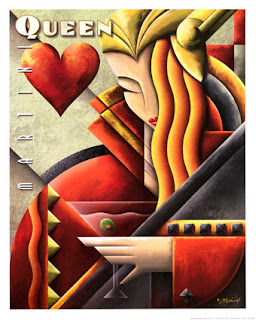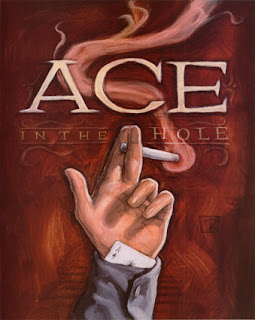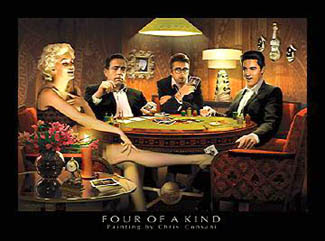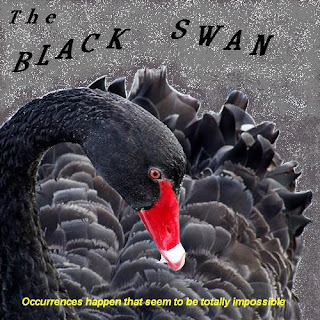A couple of things about the 2 most loved cards, the Ace and King. It's about 110 to 1 that any specific pair will be dealt, like AA or KK. It's about 220 to 1 that Kings will be beaten by Aces. If you think someone has a higher pocket pair, the odds go up about 2% to 4% for each pair from 22 to KK that your pair has been cracked. At a full table, AA will win about 35% of the time and KK will win about 31%. 22 wins about 12% at a full table and about 55% heads up. That being said, you should get a pocket pair once every 16 hands and putting into perspective, someone should be dealt pocket pairs once every 16 hands, or one and a half rounds at a full table.
At a full table there is about an 87% chance that at least one person has an Ace and about 70% that 2 players have an Ace and you can reduce that by about 5% for each person less than the full table. It's also about 87% that someone will have a King, or any other card you can name. AK vs AA, AK will win about 7%, at a full table and about 5% heads up. AA vs KK, AA wins about 81% heads up and about 29% at a full table. A 1% or 2% variance is a non-issue because the pot odds will be too high to consider such a small percentage.
"Gordon Pair Principle" from Phil Gordon.
If you have 99, there are 5 higher pairs that can beat you, if there are 5 players left to act, you multiply the numbers, 5x5 = 25, then divide by 2, for 12.5, which means there is a 12.5% chance of someone beating your pairs. It's not rocket science, but something good to use when it comes down to a hard pre-flop decision.
AA (0%)
At a full table AA will win about 35% and about 88% heads up, so you need to get heads up or at least reduce the field to increase your odds of winning. Even against a Mental Midget that will go All-in pre-flop, it's a hand you don't throw away. Heads up is about the only place to slow play. You might try it if you're on the button and everyone has folded around to you. You have to re-raise on the flop, regardless of who bets.
KK (0.5% to 4.5% that someone has a higher pocket pair)
KK vs AA, KK will win about 18% at a full table and about 19% heads up. AA wins about 23% at a full table and about 81% heads up.
KK vs XX , KK wins about 30% at a full table and about 85% heads up.
You can almost play KK the same way you play AA, except there is an 87% chance at least one person has an Ace at a full table and about a 70% chance that more than one person has an Ace. Anyone with an Ace may call a normal bet and anyone with an Ace with another Broadway card is also likely to call a normal bet, or even raise. Anyone with an under pair like QQ or JJ may raise any bet. You need to reduce the field in early position and protect the KK against anyone calling with hands like an Ace with a good kicker.
QQ (1% to 9% that someone has a higher pocket pair)
QQ vs AA or KK
QQ vs AA, QQ wins about 15% at a full table and AA wins about 27%. AA wins about 81% heads up against QQ.
QQ vs KK, QQ wins about 18% at a full table and KK wins about 24%. KK wins about 81% heads up aganist QQ.
QQ vs XX, QQ wins about 26% at a full table and about 82% heads up.
JJ (1/5% to 13.5% that someone has a higher pocket pair)
JJ vs AA or KK or QQ
JJ vs AA, JJ wins about 17% at a full table and AA wins about 27% at a full table. AA wins about 81% heads up against JJ.
JJ vs KK, JJ wins about 16% at a full table and KK wins 27% about at a full table. KK wins about 81% heads up against JJ
JJ vs QQ, JJ wins about at 17% at a full table and QQ wins about 23% at a full table. QQ wins about 81% heads up against JJ.
JJ vs XX, JJ wins about 25 % at a full table and about 79% heads up.
TT (2% to 18% that someone has a higher pocket pair)
Everyone plays the Broadway cards, AKQJT. With four cards to beat you, and 5 cards to come, TT should only be played in late positions or from the blinds. Each position behind you that stays in the hand means someone has higher cards or a possible pocket pair. Each player to play in front of you could have higher cards and a higher pocket pair. Never call with TT. You have to bet. How much will depend on what bets were placed before you and how many players are left behind you.
TT vs XX, TT wins about 20% at a full table and about 77% heads up.
99 to 22 (2.5% to 54% that someone has a higher pocket pair)
Need to play them more like a drawing hand. If you don't get trips on the flop, consider folding to any normal raise. Call normal bets, but fold to bets that are more than 2x the BB.
A raise that gets re-raised usually means someone at least has QQ and you should fold. It would be good to calculate the odds someone has a higher pair by using the Gordon Pair Principle.













